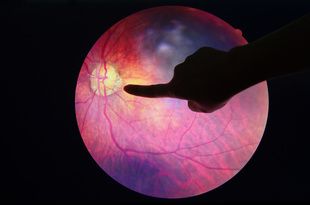Article
Bridging the Gap: Patient Expectations, Changing Technology and the Prepared Health Workforce
The gap between patients and technology can be overcome with workforce ready to handle innovation and communicate value to patients.
Today, technology is a growing catalyst for change throughout the healthcare industry. In fact, recent reports project 16% growth of the healthcare IT market, reaching more than $280 billion by 2021.
As this rapid growth takes place, it is incumbent upon the leaders in our health system to demonstrate the value of these innovations to patients. To truly reach a critical point on the path to health tech transformation, we must shift the training and education of healthcare workers who have a direct influence in encouraging patients to value and adopt healthcare technology as part of their care experience.
The path toward this transformation, however, is not without its barriers. According to a recent University of Phoenix College of Health Professions survey, nearly two-thirds (59%) of Americans are turning to online health resources, such as WebMD, as a substitute for primary healthcare. Although the survey indicates WebMD and other resources like it seem to be preferred by patients, other healthcare technologies are not being embraced at a higher rate. Only a quarter of Americans who have access to health technology use resources like e-prescription filing services (26%), online health records (25%) and online appointment booking services (15%).
Fortunately, this barrier — the existing gap between patients and technology – can be overcome if we build a workforce equipped to handle both these rapidly evolving innovations and communicate their value to patients. To build this highly skilled workforce, employers must adopt professional development systems that encourage speciality and technology training. Additionally, they should develop incentives for workers who inspire patients to be enthusiastic about technology with career growth.
Another part of the solution is encouraging partnerships between employers and universities and education institutions to share industry trends that can shape future programs. At University of Phoenix, for example, the College of Health Professions and the College of Information Systems and Technology hosts annual advisory councils that unite leaders in companies and organizations from across the health system to discuss the emerging issues affecting the healthcare workforce. Outcomes from this meeting inform our focus areas and curricula to ensure we’re providing our students with the most career relevant education possible, including skills in cybersecurity and telehealth.
Finally, to make a connected health system a reality, patients and employees not only need access to healthcare technologies, but also an understanding of the value these technologies add to the overall healthcare experience. Lasting progress can be made if we commit to training healthcare workers to use technology that inspires patients to be more empowered in their own care; this is especially important given that studies show patients who are more engaged in their care have better health outcomes and incur lower costs.
The healthcare industry is projected to add 2.3 million jobs between 2014 and 2024. With renewed urgency from employers to provide resources and training for healthcare workers, we’ll be working toward an America where the health technology gap is filled and better health outcomes are an accessible reality for all.
About the Author
Doris Savron is the executive dean of the College of Health Professions, College of Education and College of Humanities and Sciences at University of Phoenix. Savron’s career spans 20 years in healthcare, information technology and academia. She has held a number of leadership roles in her tenure with University of Phoenix, including serving as vice president of Student Services and territory vice president over campuses. Prior to joining the University, Savron spent 10 years in leadership roles in healthcare operations, rehabilitation services and information technology consulting. Savron holds a master of business administration from Cleveland State University and is completing her doctorate in health administration from University of Phoenix.

